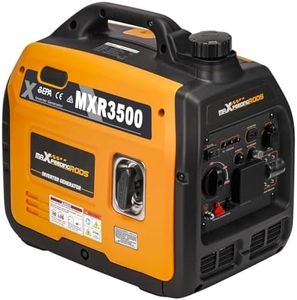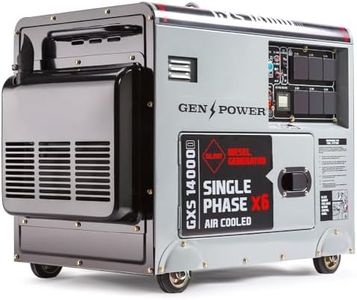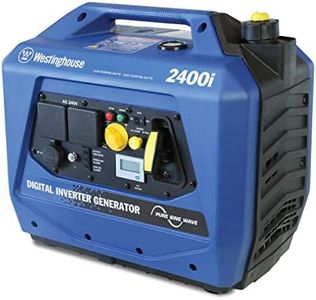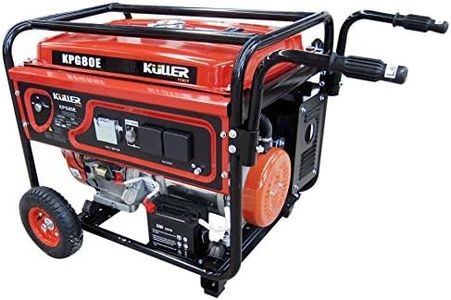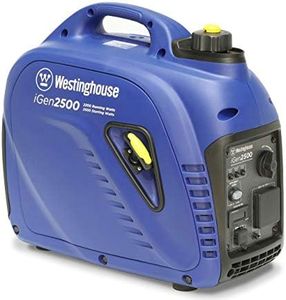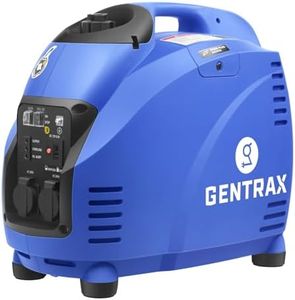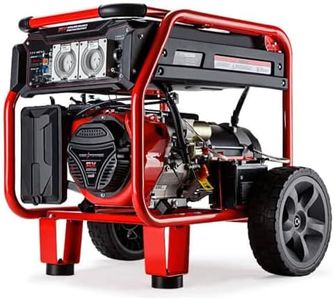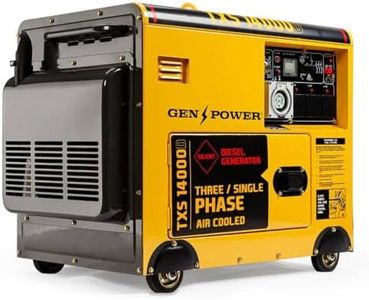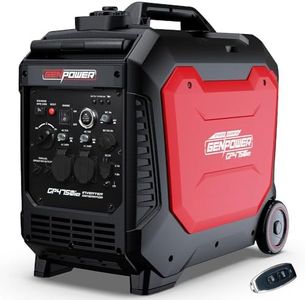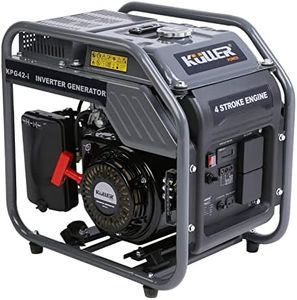We Use CookiesWe use cookies to enhance the security, performance,
functionality and for analytical and promotional activities. By continuing to browse this site you
are agreeing to our privacy policy
10 Best Rated Generators
From leading brands and best sellers available on the web.By clicking on a link to a third party's website, log data is shared with that third party.
Buying Guide for the Best Rated Generators
When shopping for a rated generator, it's important to focus on what you'll be using it for, how much power you need, and where and how often you'll be using the generator. Before choosing, figure out the total wattage required by the devices you want to power and note if you need the generator for backup during emergencies, for outdoor events, or for regular use at job sites. Picking the right generator requires balancing portability, power output, runtime, and features like safety and ease of use.Rated Power Output (Watts)Rated power output, listed in watts, tells you the amount of continuous power the generator can supply. This spec is crucial because it determines how many and what kind of appliances or tools you can run at the same time. Generators are usually divided into segments based on output: small (under 2,000 watts), medium (2,000–5,000 watts), and large (above 5,000 watts). Small units are often enough for essential electronics and lights, medium ones can handle most home essentials or small job sites, and large units can run heavy-duty tools or almost an entire home. To choose, start by adding up the running wattages of the devices you want to run simultaneously—that total should guide your pick.
Surge Power (Starting Watts)Surge power or starting watts is the maximum output a generator can briefly supply when appliances cycle on, like when a fridge or power tool starts up. This matters because certain items draw more power when switching on than they do while running. Generators often list both the rated (running) and surge (starting) wattage. If you're running items with motors or compressors, choose a generator with a surge power rating that comfortably exceeds your highest startup wattage needed; otherwise, you could risk overloading the system.
Fuel TypeGenerators can run on gasoline, propane, diesel, or even solar power, and the fuel type affects runtime, maintenance, and suitability for different uses. Gasoline generators are commonly available and portable but require safe storage of fuel; propane units are cleaner and can be easily stored; diesel generators are durable and more fuel-efficient for larger units; solar is quiet but usually lower-powered. Consider availability, runtime needs, and ease of refueling when picking your preferred type—think about your access to fuel and how long you may need the generator to run without interruption.
Runtime at 50% LoadThis figure shows how many hours a generator will run on a tank of fuel when operating at half its maximum rated capacity. It’s important because longer runtime means less frequent refueling and more convenience in emergencies or remote locations. Runtimes can range from a few hours for portable units to over 10 hours for larger models. If you need overnight or extended power, look for a generator with a higher runtime value at 50% load, and always consider your likely usage pattern.
PortabilityPortability refers to how easy it is to move the generator. Smaller generators are often lightweight and have carrying handles, while larger units might have wheels and handles—stationary models are meant for permanent installation and aren't easily moved. If you plan to take your generator camping, to worksites, or to move it around the house, aim for something designed with portability in mind.
Noise Level (Decibels)Noise level, measured in decibels (dB), indicates how loud the generator is when running. This spec is important if you're using the generator at home, in neighborhoods, or campsites where noise could be an issue. Levels can range from under 60 dB (comparable to a normal conversation) for quieter models to over 70 dB for standard units. Consider your environment; for recreational or residential use, quieter models are preferable, while high-noise units may be fine on construction sites.
Safety FeaturesSafety features might include automatic low-oil shutdown, circuit breakers, carbon monoxide detectors, and overload protection. These elements protect both you and your appliances from damage or hazards. Look for these extra layers of safety—especially if you are not experienced with generators or plan to use them in homes or crowded locations.
